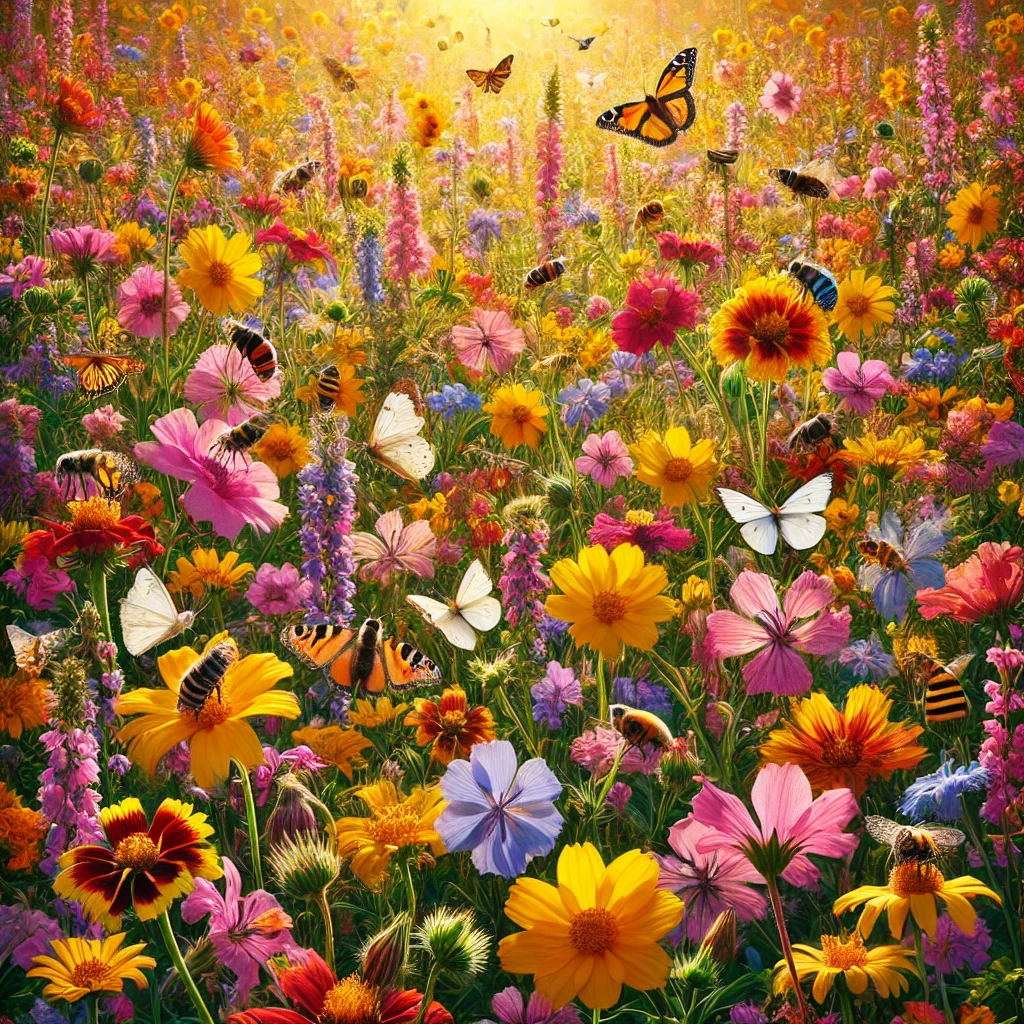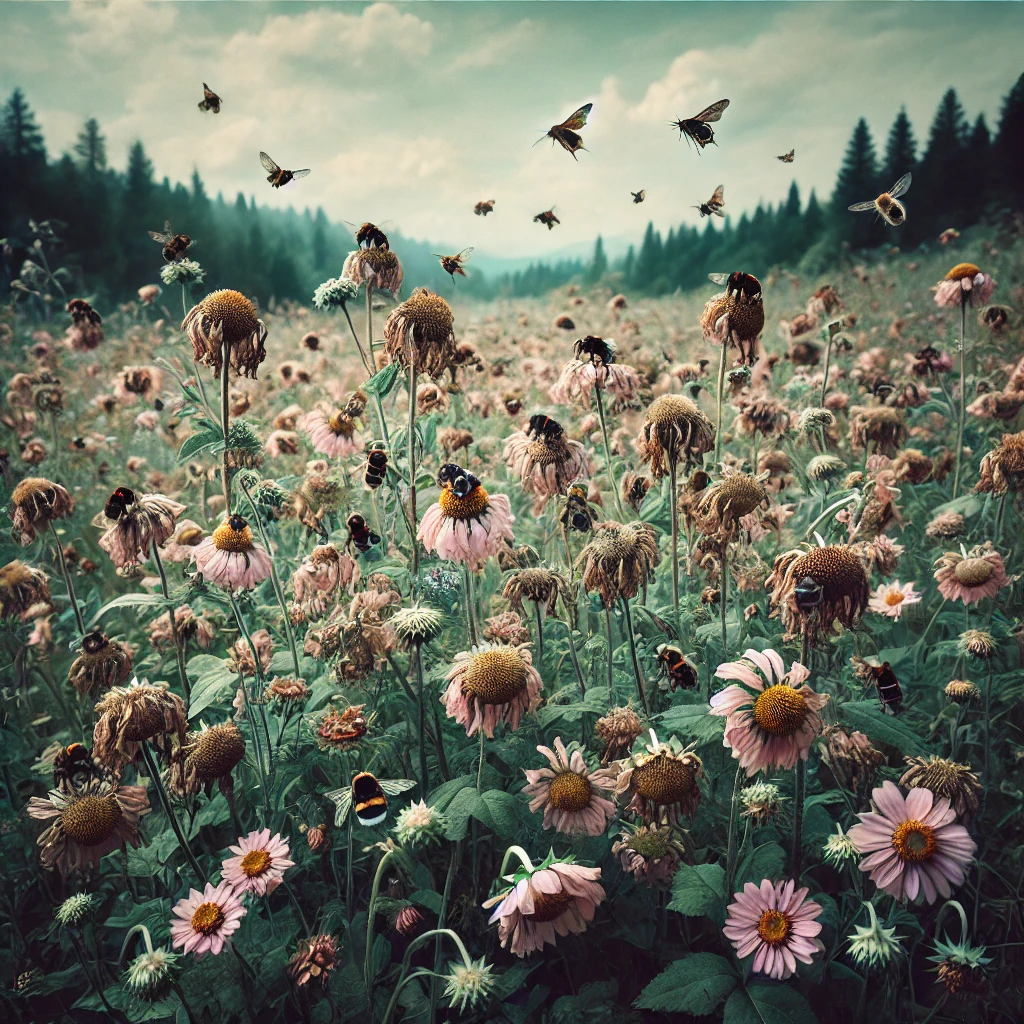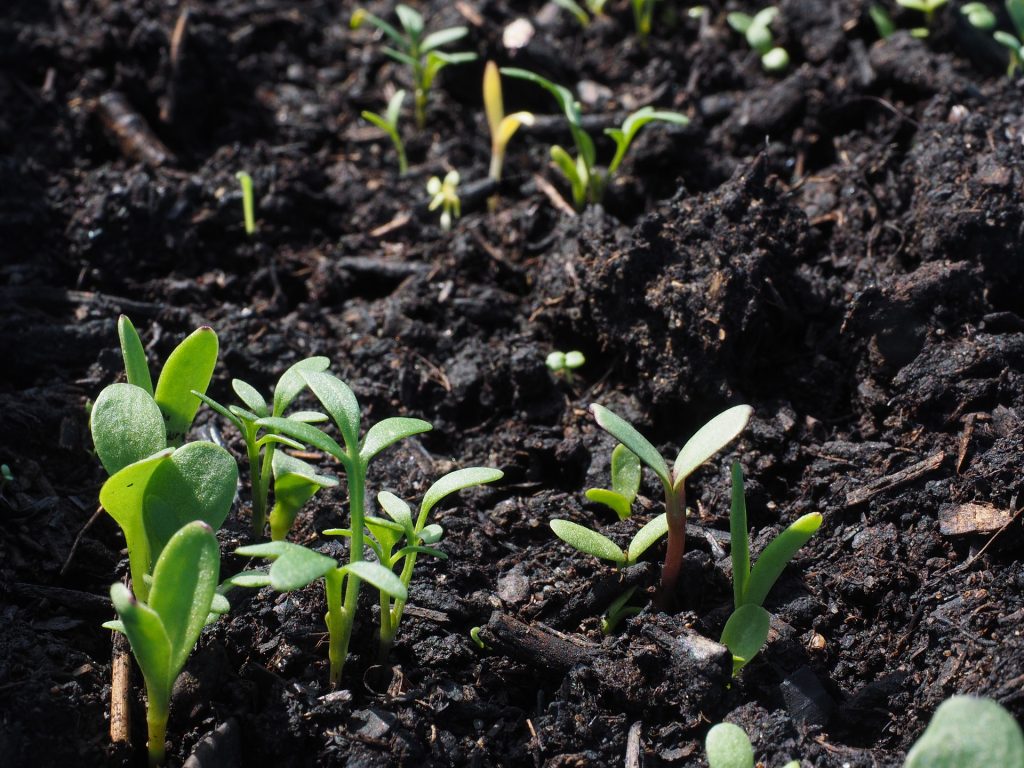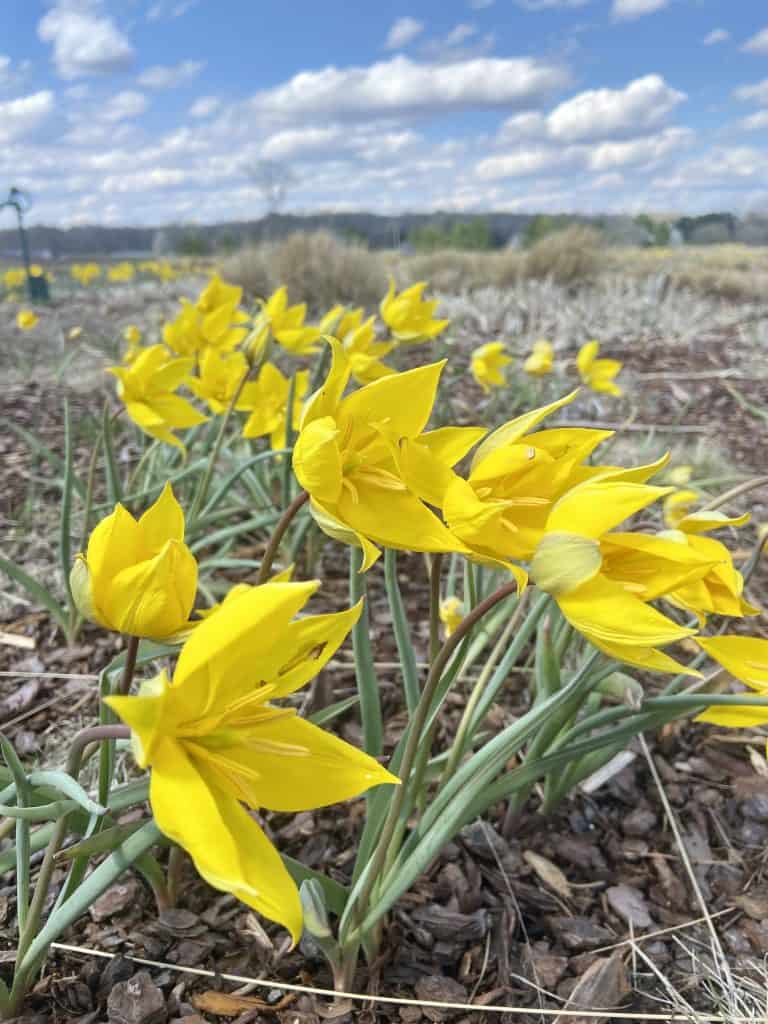Just imagine A World Without Pollinators – In the quiet hum of the garden, in the flicker of wings between flower and fruit. a story unfolds- one as old as time itself. Pollinators, those tireless workers of the natural world, sustain life in ways most of us scarcely consider.
They are the architects of abundance, weaving together ecosystems, food chains, and human survival with each delicate landing. Yes, for all their labor, they remain overlooked, their importance dismissed until the harvest falls or the flowers stand barren.

A World Without Pollinators
Imagine a world where the apple blossoms never set fruit, where the fields of tomatoes and squash yield nothing but withered vines. Picture the countryside stripped of wildflowers, meadows silent without the buzz of bees, and the hollow air where once butterflies danced.
This is not a dystopian fantasy; it is the stark reality we risk if pollinators continue declining.
Over 75% of the world’s flowering plants rely on pollinators, and more than a third of global food production depends on their efforts. Without them, we face shortages of fruits, nuts, vegetables, and even coffee and chocolate. The biodiversity that supports entire ecosystems crumbles when pollinators disappear, setting off a cascade of loss that reaches far beyond the garden gate.

The Pollinators Among Us
Bees, often seen as the poster children of pollination, are only part of the story. Butterflies, moths, beetles, flies, wasps, bats, and hummingbirds all play their roles in the great exchange of pollen. Each species brings its own efficiency, its own preference for certain flowers, ensuring diversity in both plants and the animals that depend on them.
Take the native bumblebee, a powerhouse of pollination that uses “buzz pollination” to release pollen from flowers that honeybees cannot access. Or the hawk moth, hovering at dusk to sip nectar from night-blooming plants, keeping the cycle moving long after the sun has set. Even ants, often dismissed as pests, contribute to seed dispersal, ensuring the next generation of plants takes root.
The Crisis at Hand
Despite their importance, pollinators are in trouble. Habitat loss, pesticide exposure, climate change, and disease are wiping out populations at an alarming rate. Industrial agriculture, with its monocultures and chemical dependence, has created landscapes that are hostile to life, stripping away the native plants and nesting sites pollinators rely on.
The decline of pollinators isn’t just an environmental issue—it’s a food security crisis, a biodiversity emergency, and a warning that we are unraveling the very systems that sustain us.
What We Can Do
The good news? Nature is resilient when given the chance. As stewards of the land, we have the power to turn the tide.
1. Grow for Pollinators – Replace sterile, ornamental landscapes with native plants rich in nectar and pollen. Design gardens that bloom in succession, ensuring food is available from early spring through late fall.
2. Rethink Lawns – Traditional lawns are ecological deserts. Let clover, violets, and dandelions grow. Consider meadowscapes that provide both beauty and habitat.
3. Go Organic – Pesticides, herbicides, and fungicides disrupt the delicate balance of life. Choose organic gardening practices and advocate for policies that reduce chemical use in agriculture.
4. Provide Shelter – Many pollinators need more than flowers. Leave bare ground for ground-nesting bees, install bee hotels, and allow leaf litter and logs to remain as overwintering sites.
5. Educate and Inspire – The future of pollinators depends on awareness. Share knowledge, teach children about their importance, and support conservation efforts that protect pollinator-rich landscapes.
A Garden for the Future
Every act of conservation, no matter how small, is a step toward resilience. When we plant a wildflower patch, when we refuse to spray chemicals, and when we let a milkweed stand for monarchs, we become part of the solution. The fate of pollinators is entwined with our own, a truth we can no longer afford to ignore.
The garden is more than a collection of plants—it is a living, breathing ecosystem shaped by the creatures that move within it. And the future is still being written in the quiet hum of wings, in the flicker of motion between bloom and fruit. Let us make sure it is a future where pollinators—and all of us—can thrive.
🌱 iGrowHort – Weekly Garden Tips 🌱 Helping you grow a greener, more sustainable garden!
📩 Stay inspired with expert gardening advice every week.
🌼 Shop native seeds for a thriving pollinator-friendly garden: VivaNative.com
🌿 Grow with us: iGrowHort.com
📷 Follow for daily garden inspiration: Instagram | Facebook | Pinterest
Happy Gardening! 🌞🌻🐝



